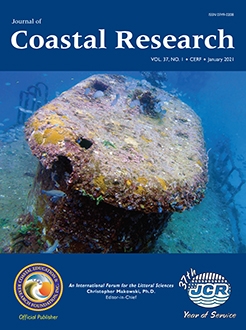Moore, S.; Heise, E.A.; Grove, M.; Reisinger, A., and Benavides, J.A., 2021. Evaluating the impacts of dam construction and longshore transport upon modern sedimentation within the Rio Grande Delta (Texas, U.S.A.). Journal of Coastal Research, 37(1), 26–40. Coconut Creek (Florida), ISSN 0749-0208.
The modern Rio Grande delta system has experienced a century of dam construction, water removal for irrigation and municipal use, and land use modifications that have dramatically reduced its sediment load. This study examines whether damming has sufficiently limited delivery of upstream sediment to permit locally eroded sources and/or littoral transport along the coast to influence the provenance signal of the Rio Grande delta. Changes in sediment provenance within the Rio Grande's delta can be detected and quantified by measurement of detrital zircon Uranium–lead dating age distributions. Previous provenance studies indicate that modern Rio Grande river sand upstream of Falcon Dam is enriched in zircon derived from Oligocene volcanic fields within the southern Rocky Mountains and the Sierra Madre Occidental. Results from this study indicate that the abundance of Oligocene zircon is depleted in the modern Rio Grande delta relative to river sand sampled upstream of Falcon Dam. Mixing calculations performed with age distributions representative of Eocene–Miocene fluvial sedimentary deposits that crop out downstream of the dam indicate that erosional reworking of these materials has significantly altered sedimentary provenance within the delta. The importance of north-directed longshore transport along the Mexican (Tamaulipas-Veracruz) Gulf Coast was also evaluated. The absence of distinctive zircon from the Trans Mexican volcanic belt and the basement of southern Mexico within the barrier islands of the Rio Grande delta support previous conclusions that sediment transport along the Tamaulipas-Veracruz shelf is highly compartmentalized and restricted in lateral movement due to seasonal variation in littoral current polarity, topographic barriers along the shelf, and other phenomena. Nevertheless, the results of this study demonstrate that construction of dams across rivers such as the Rio Grande is capable of sufficiently limiting upstream sediment transport to permit otherwise unimportant local sources to dominate sand provenance within their delta systems.





